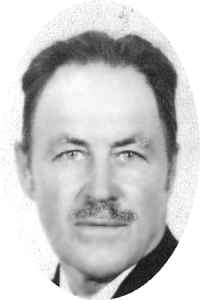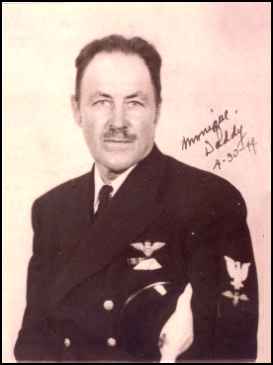
-1963 |
 |
Collection of Peter T. Catoe, 8-28-05 |
|
William is mentioned briefly on the Stripes & Wings page of the USAF Museum website. You can visit that reference by clicking on: William Lamkey and using the "Find" function on "Lamkey" |
|
The Foreign Aviators of the Division of the North 1914-1915 by DOCTOR LAWRENCE D. TAYLOR The Mexican REVOLUTIONARY FIGHT from 1910 to 1920 constituted one of the first wars of this century in which the airplane was used as a battle weapon. The Italian Army was first in using the airship in war during its conquest of the Turkish territory of Cirenaica and Tripolitania between 1911 and 1912. They also used it against the belligerent forces that fought in the War of the Balkan Mountains from 1912 to 1913,1 Almost immediately, these " Constitutionalist " rebels tried to smuggle an airplane across the border in an attempt to provide air support to their dispersed armed groups that fought in the north of Mexico. The airplane they acquired in this manner was a twin-engine Martin Pusher equipped with a Curtiss motor of 75 horsepower. It then comprised the entire airforce of the Army of the Northwest of Alvaro Obregón. With this airplane, piloted by the French Didier Masson and the Mexican Gustavo Salinas Camiña, several bombings were carried out in the summer of 1913 and the spring of 1914. As part of the rebel operations in the regions the northwest of Sinaloa and Nayarit, the airplane attacked several groups of naval forces and infantry. Three other Moisant military single-engine airplanes in tandem, designed by Harold Kantner for the Moisant Aviation School and Company, were dispatched to Chihuahua to be united with that portion of the Constitutionalist forces. Other American aviators arrived as reinforcements for the squadron: J. Floyd Smith with his mechanic, W. E. "Billy" Gibson; Gover Cleveland Bergdoll, and William "Sailor Anthony" Lamkey. The Division of the North, with their forces remarkably diminished, was sent on Aguascalientes in a desperate attempt to delay the advance of Obregón. Equipped with new pilots and more powerful airplanes, the aerial flotilla of Villa was in better condition to perform missions of reconnaissance and bombing in support of the defense of this railway center of strategic importance. Pancho Villa supported airborne operations in the central region of Mexico from April to July, 1915 During the battle to conquer the city, Lamkey flew a Martín twin-engine plane Tractor TT, one of the more advanced models of the period, accompanied by Floyd E. Barlow as observer and bombardier, In spite of this technical improvement, their efforts and those with which they combined with the ground forces of the Division of the North, were not sufficient to prevent Obregón's forces from taking the town on July 10, 1915. |
via email from Chris O'Connor, 9-1-05 Grandson of William Lamkey My mother, formerly Rosemary O'Connor, has just sent me a string of emails regarding your work on the history of my grandfather, Wm. Lamkey. Wow, I really enjoyed seeing what has been collected! I was aware of much of it, but was completely surprised by some of the facts and events. I had heard the tales about Poncho Villa and the sea plane with the broken wing as a kid in Burbank, CA. He lived 2 house down from us when we moved to CA. In fact we moved to Burbank because he was there." To read the rest of the story, which reveals stories of his descendents who carried on the family Naval traditions, click on the title above. |
|
William Lamkey died January 7, at the Veteran's Hospital, in West Los Angeles. He had attended the Early Bird Reunion at San Diego, on Oct. 19-20. At that time, unknown to any of the Early Birds, he had gone to visit some friends in the back country of San Diego, and had not been feeling well, and they had taken him to the Veteran's Naval Hospital at San Diego, where he suffered a stroke and was partially paralyzed and lost his speech. He stayed there until mid-December, when he was transferred to the Briarwood rest home in Encino, Calif., by his daughter Rosemary O'Conner. A few weeks later, he suffered another stroke, from which he did not survive. I had gone to see Bill Lamkey twice in San Diego, (once accompanied by Dave Young), and again, just before Christmas at Encino. During this last visit, it seemed that he had really improved and that if he could only regain his speech he would be well on the road to recovery. Services were held and interment made with military honors at the Sawtell Veteran's facility. Early Birds (list furnished by Warren Eaton) attended. Bill joined the Navy in 1902, where he served as an enlisted man until 1912. In that year he enrolled in the Moisant School of Aviation at Mineola, L. I., where he graduated with F.A.I. License No. 183, November 6, 1912. The record indicates that he then enlisted in the Army, and was stationed at Honolulu, in 1913-14. Since the Army had no flying activity there at the time it can be assumed that he did no flying during this period. During the Mexican Revolution, he ferried a plane to Pancho Villa, and, with two other pilots was persuaded to stay on. The others were less fortunate, but Bill got out without a scratch. |
 |
Collection of Peter T. Catoe, 8-30-05 |
|
During the earlier stages of World War I, Lamkey
was back in the Navy and did a certain amount of flying at both Pensacola and Coco Solo, presumably instructing. Later in World War
I, we find him in France stationed at a sea coast town of Le Croisic, as a pilot of a flying boat in an all enlisted personel patrol squadron.
During this activity he was forced down at sea, and one wing was completely sheared off. When he did not return to base that night, he
was presumably lost. Two days later cheers of "here comes Lamkey" went up as he came taxiing in with a jury rig on his crippled side,
to equalize the drag to make the plane controllable for its long journey home on the water. Bill Lamkey, during the 1920's received a patent on a tow target which was extensively used by both services. During the same period he was assigned to the Navy's ligher than air base at Lakehurst, N. J., at the time of the Shenandoah and the "C" type dirigibles. Shortly after the organization of the Aeronautics Branch of the Department of Commerce, in 1926, he was employed by them as an aircraft inspector, serving in the mid-west area. In later years he served as an inspector at Lockheed, until his retirement in 1959. His nephew, Fred Lamkey, has many fine photographs of the Moisant School days and the Lakehurst activities, some of which we hope to obtain for publication. One by one they crept silently to rest and left their toys and experiments to the nation's children to carry on. The individual nothing --- the race everything. --- William Lamkey, October 11, 1942 CHIRP, October, 1962, Number 69 |


|